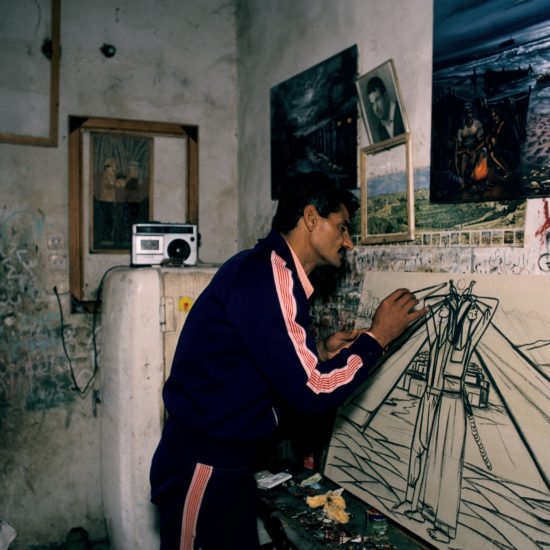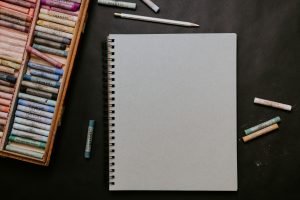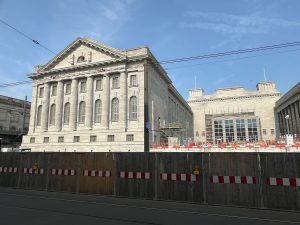Gazan artist Fathi Ghaben died on Sunday, February 25 from health complications after Israeli authorities refused to give him permission to leave the besieged region to access medical treatment. He was renowned for his oil paintings that paid homage to Palestinian culture and immortalized the struggle for liberation.
The self-taught painter was 77 years old and had been suffering from chest and lung issues that made it difficult for him to breathe, according to an announcement from the Palestinian Ministry of Culture. In the days leading up to his death, the artist had been receiving treatment at the Shuhada al-Aqsa Hospital in Deir al-Balah, according to a report by the Palestine News and Information Agency (WAFA). Palestinian journalist Basel Khalaf also reported on X that the artist’s home and studio, containing his works, had been destroyed by Israeli bombardments.
Ghaben was born in 1947 in the Palestinian village of Hiribya, a community that was forcibly depopulated and subsequently destroyed by Israeli forces during the 1948 Nakba. During this period of mass displacement, his family sought refuge in the Jabalia refugee camp, located north of Gaza City. After leaving school in the sixth grade, Ghaben began teaching himself to paint, notably preferring to use his fingers in lieu of brushes, according to a 1987 interview republished by the Alserkal Arts Foundation.
A pioneering figure in the post-Nakba visual arts community, Ghaben was celebrated for his colorful depictions of Palestinian folk life, natural landscapes, and the resistance to the Israeli occupation.
In 1984, Israeli forces arrested and sentenced Ghaben to prison for six months, allegedly after the artist painted the Palestinian flag, according to the Palestinian Museum in the Occupied West Bank. The Israeli court also confiscated seven of his artworks on the grounds that the paintings encouraged violence.
In a 2015 interview with Al-Monitor, Ghaben told the news outlet that his oil painting “Identity” (1982) specifically made him a target of Israeli authorities.
“It represents a group of people protesting at the Damascus Gate in Jerusalem, and in it, I anticipated the first intifada,” the artist said. “It was printed in colored ink on posters that were distributed in the West Bank and the Gaza Strip.”
Many Palestinian artists and cultural organizations have taken to social media to mourn the loss of Ghaben and remember his legacy through his paintings.
“He learned art by doing, and in the seventies and eighties of the last century, he became one of the most essential artists in Gaza through his expression in his paintings of nostalgia for Palestine before the Nakba and his drawings about identity and liberation,” Palestinian artist Sliman Mansour wrote in an Instagram post.




